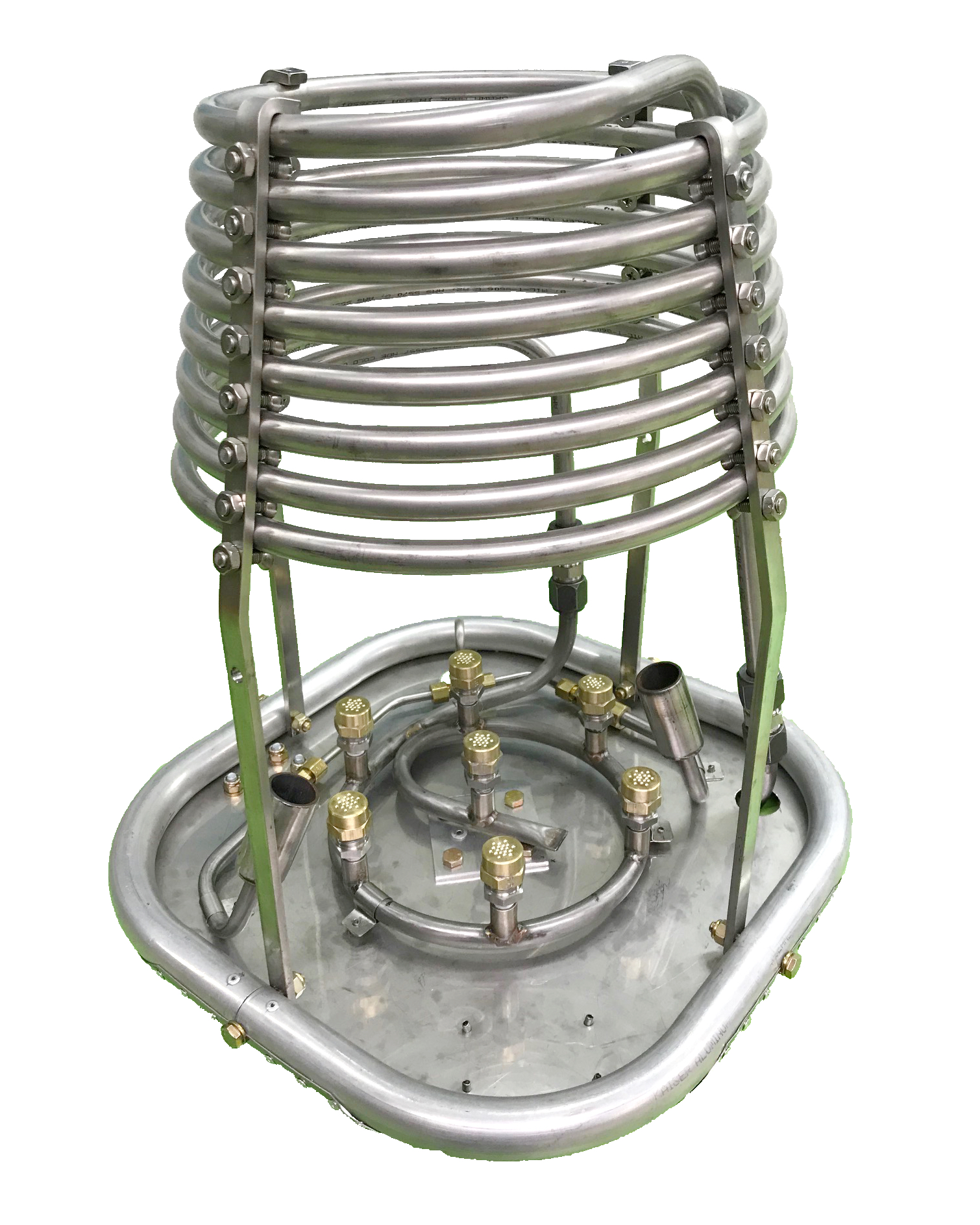Today all hot air balloon burners have one thing in common. They use liquid propane as their fuel source. When using liquid propane the burner has to serve a dual purpose. First it must convert the liquid propane to a vapor, so it can be burnt at the orifices to produce the heat that makes the balloon fly. Achieving this function is where each balloon manufacturer differs in burner design. If you compare the shape of the Avian burner coils to other manufacturers, you’ll notice it has a larger circular radius with few 90 degree bends in its preheat coils. The reason we design our burner coil this way is to utilize a very basic principle of fuel flow.
“The fewer the restrictions to flow, such as tight bends in tubing, in the complete burner system, the greater the pressure will be when it is released at the burner orifices, giving a higher BTU output.”
In 1975 we also discontinued the toggle valve design commonly used in other balloon burners for the much simpler BALL VALVE design. The toggle valve design requires periodic maintenance to assure that propane leakage does not occur. The ball valve, on the other hand, is maintenance free and does not contain the “O” rings found in the toggle valve design. Also no lubrication is required for the life of the ball valve as required in the other valve designs.
Another reason we discontinued the toggle valve was because of its poor fuel flow characteristics. This valve design runs the propane in an up, around, and down flow pattern making for considerable restrictions in the valve. The ball valve, on the other hand, has a large diameter flow port, that runs straight through the valve body. This gives the ball valve unbelievable advantages in flow characteristics.
Avian’s burner design is further complemented by its fuel system design. A burner can perform only as well as its fuel system. Avian’s fuel system is engineered to allow maximum fuel to the burner. We did this by first custom designing our 15 gallon stainless steel fuel tanks. Although most stainless steel fuel tanks look the same on the outside, our tanks have a number of distinctive differences. As you review our design, you will notice we chose to install the fuel valve, bleeder valve, and pressure relief valve separately. This method is more expensive, but the benefits out weigh the expense.
We feel it is better to have three separate valves to handle three separate functions. Some other tanks on the market utilize a single valve to do all three functions. For the valve to do this, a very small diptube had to be used. The diptube size most commonly used is a 1/8 inch pipe. Our liquid withdrawal diptube is a 1/2 inch O.D. stainless steel tube. This allows an unrestricted fuel flow to the tank valve.
To complete our fuel system, the hose assembly starts with a hand tighten POL which is attached to our hose and mandrel fittings. We use the mandrel type fittings because more fuel is allowed to flow through these fittings than a non-mandrel fitting. This type of design is used throughout the fuel hose system to assure there are fewer restrictions in the system.
These design features, along with our trouble free vapor pilot lights, have given the Avian burner designs a distinctive edge in high performance burner technology.

